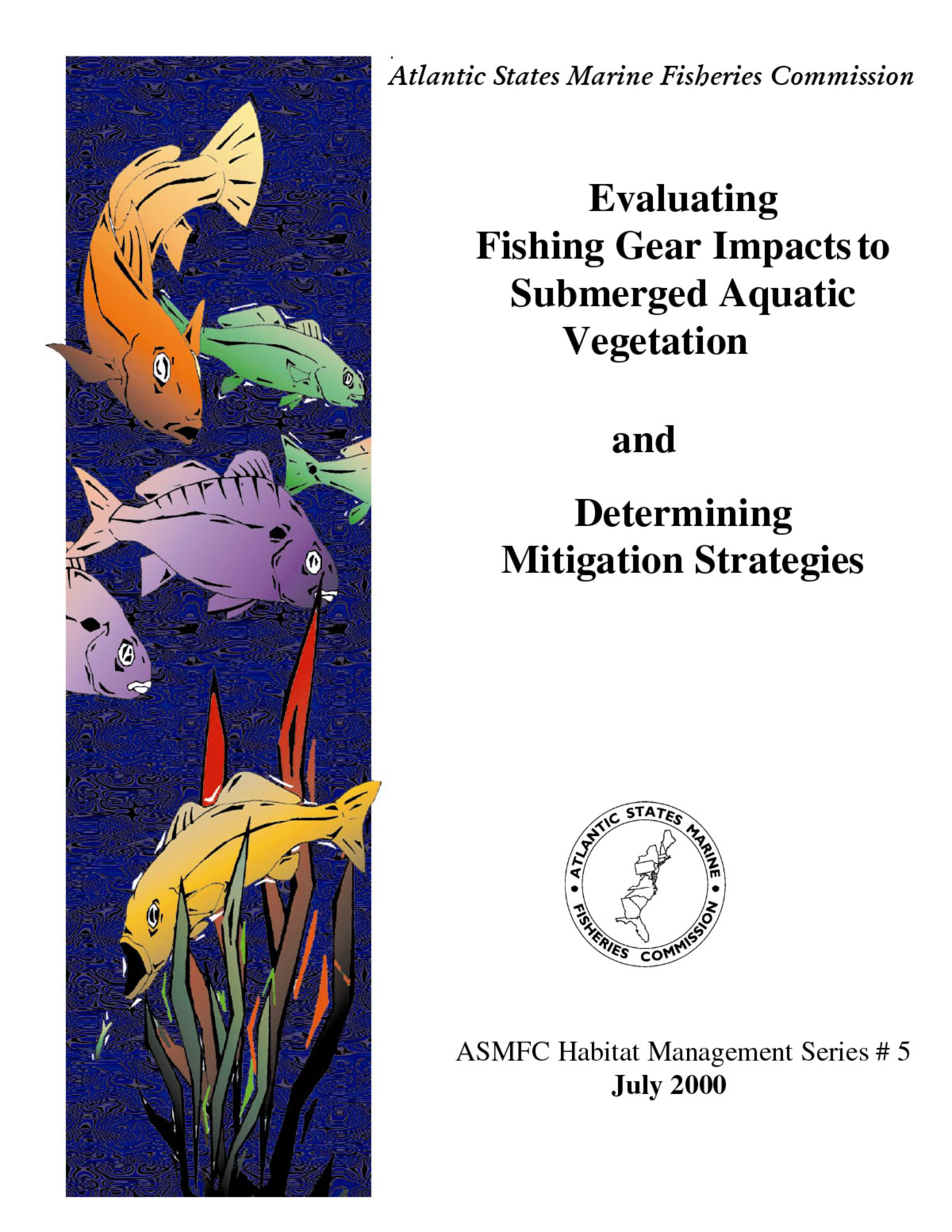To enhance protection of SAV, the Commission adopted an SAV policy in 1997 with the goal of preserving SAV, and ultimately achieving a net gain in SAV distribution and abundance.
Habitat Committee
An overview of discussions, decisions, and recommendations made during meetings, focusing on habitat conservation, restoration, and management strategies that support sustainable fisheries along the Atlantic coast.
-
-
The body of current knowledge and expertise in manmade reef development and technology has been produced either directly or indirectly through all these state efforts. This document represents the collective knowledge and policy direction of the state programs, through the interstate marine fisheries commissions, and is intended to be complementary to the Plan and any subsequent revisions thereto.
-
This guidance was prepared to serve as a reference for fishery management plan (FMP) writers during the drafting of habitat sections for ASMFC FMPs or FMP amendments.
-
ASMFC is establishing this policy on submerged aquatic vegetation, emphasizing both the true seagrasses and freshwater species, because of the important role SAV plays in the habitat of ASMFC managed species, and because some of these species utilize both seagrass and freshwater SAV habitats during their ontogenetic development.
-
The decision to focus ASMFC’s attention on submerged aquatic vegetation was prompted by increasing concerns that the coast-wide health of this valuable resource may be declining, that certain human activities may be adversely affecting SAV, and that the Commission may need to take action in its fishery management plans (FMPs) to protect SAV as valuable fish habitat. Based on those facts, Habitat Committee Chair Tom Fote (NJ) established the Submerged Aquatic Vegetation (SAV) Subcommittee on May 28, 1996.
-
This document is a collection of papers presented at a workshop entitled “Management of Atlantic Coastal Marine Fish Habitat: Proceedings of a Workshop for Habitat Managers,” held June 3–6, 1996, in Philadelphia, Penn.
-
Technical working papers from a symposium on artificial reef development held at the American Fishery Society Annual Meeting in Tampa, Florida, August 29, 2995
-
The Artificial Reef Technical Committee of the Atlantic States Marine Fisheries Commission was established in 1984 to provide critical advice to the Commission on development of artificial reefs along the Atlantic Coast. The committee is composed of the senior state scientists responsible for marine artificial reef programs in eleven of the Commission’s fifteen member states (Rhode Island, Massachusetts, New York, New Jersey, Delaware, Maryland, Virginia, North Carolina, South Carolina, Georgia, and Florida). Representatives of the National Marine Fisheries Service, the U.S. Fish and Wildlife Service, and the Environmental Protection Agency also participate on the committee. The following report was produced…
-
Artificial reef programs have traditionally relied upon vessels as the primary source of material for artificial reef construction. Over the past several years, the increasing cost of preparing these vessels and the fluctuating availability of suitable craft have led several states to use other types of reef materials. In spite of these problems, vessels still play a major role in many state and local artificial reef programs. This survey was developed to assess the role of vessels as artificial reef materials in the Gulf and Atlantic States.
Get Hooked on ASMFC News
Dive into the latest updates and catch all the important news by joining our newsletter mailing list. Stay in the loop with meeting agendas, fisheries management news, and more.
